How To Clean Old Water On Bucket
Cleaning tombstones and monuments has become quite pop among many individuals and groups. Some groups practise it as part of reading cemeteries to gather historical documentation or as a style to beautify a cemetery. Others are individual descendants doing much the same things. And others have on tombstone cleaning for things like Eagle Scout projects. The post-obit are the all-time and easiest means to accomplish this in the most practice no harm manner available at this time. Yous will observe more data on harmful cleaning under HARMFUL METHODS…Don't clean with. Brand sure your method is not a harmful one. For your safety, please always make sure the tombstone or monument you are working with is sound and doesn't nowadays a danger of falling. And for the sake of the stone, please check for sugaring and delamination so you don't inadvertently harm it farther or permanently.

The following is a bully tutorial on good safe cleaning instruction and habits that covers the gamut of cleaning about natural substances, with a focus on biological growths. Nosotros feel this is a bully identify to start. More on other cleaning methods and products for other cleaning bug will exist addressed below this article.
HOW TO PROPERLY Make clean HEADSTONES AND MARKERS
Past CCUS member Susan Dunham of Maine Gravesite Maintenance
Virtually of the states have visited cemeteries with headstones and markers covered with environmental grime and biological growth such as moss, lichens and mold. The grime and dirt can exist removed with a proper cleaning, which will avoid causing any damage to the rock. Even though the markers are made of stone, most old markers are incredibly frail. They suffer from "invisible' stress cracks, delaminating layers of rock, and other age related problems.
Anyone desiring to clean the headstones and markers in a cemetery should get permission from a descendant, the sexton, cemetery superintendent or the town, in that order. If unsure who to ask, go to your town cemetery keeper and inquire. It is not acceptable to have it upon yourself to clean the headstones without permission, without learning the correct methods or non using approved materials. You may all the same, clean your own family members' stones. The standard that Professional Cemetery Preservationists and Stone Conservators piece of work on is "Do No Harm", and information technology is imperative that you lot perform your work to the same "Exercise No Impairment" standard.
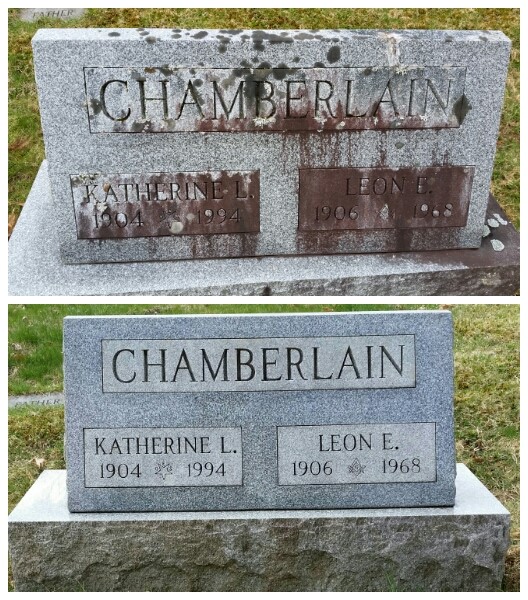
Every time a marker is cleaned, minute particles are removed from the surface of the stone. It tin be harmful to clean them too oftentimes. Nigh markers in cemeteries are made of limestone, sandstone, slate, marble, granite, or in some cases concrete. Still, each marking'due south condition is different and you should base your cleaning on the condition of that stone. Cleaning headstones helps to preserve them and information technology should never be your intent to brand them look new again, just clean.
We, Cemetery Conservators for United Standards, have established and follow standards, precautions, procedures, and take listed materials that we use for cleaning cemetery headstones and markers. Be sure to read this information completely and understand the proper process earlier proceeding to clean stones in a cemetery.
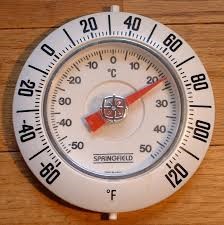
- Ensure the stone is stable, secure, level and that all sections are securely attached to each other. Also bank check that the stone is not in danger of falling if you put pressure level on it. Your condom is of the utmost importance.
- If the weather is hot and the stone surface is hot to the bare hand, practise not put cool water on information technology. It may cause stress cracks in the stone. Cover the stone to cool it or let the water warm in the sun earlier using information technology.
- Practise not clean a stone if at that place is whatever run a risk of freezing temperatures. Water volition go into cracks and freeze. Water expands when frozen and may crevice the stone.
- Do not endeavor to make clean a broken headstone.
- Make sure you have enough water to thoroughly clean and so rinse the stone several times. Leave no residue from the cleaning agent on the stone as it could cause permanent streaking.
- NEVER use household cleaners, bleach, metallic tools, scouring pads, wire brushes, ability tools, pressure washers or nyalox brushes. A newer product called Moisture and Forget has non been thoroughly tested, and this is not a production we can recommend.
INSPECTION
Bank check for delamination of the stone, this is where layers of the stone begin to divide. Lightly tap on the stone with your knuckle or other soft object. If you hear a 'hollow' sound, the rock is probably delaminating. Do not attempt to clean. This should exist left to a professional stone conservator or preservationist.
- Check for stress cracks. This is an easy check. Thoroughly wet the rock with water. Discover it while it is drying. Stress cracks will testify upwardly as wet 'streaks' because the water has entered the scissure and will take longer to dry than the surface h2o. If the stress cracks are broad or severe, again go out this stone to the professionals.
- Bank check for loose sections in the marker. If it needs to be secured, leveled or reset stop. This is a job for a professionals. Always err on the side of rubber.
- Check to see if biological growth has cracked the stone. The growth must exist carefully removed and the rock repaired before cleaning. Material at the cracked edges is very fragile and will chip off even with gentle cleaning.
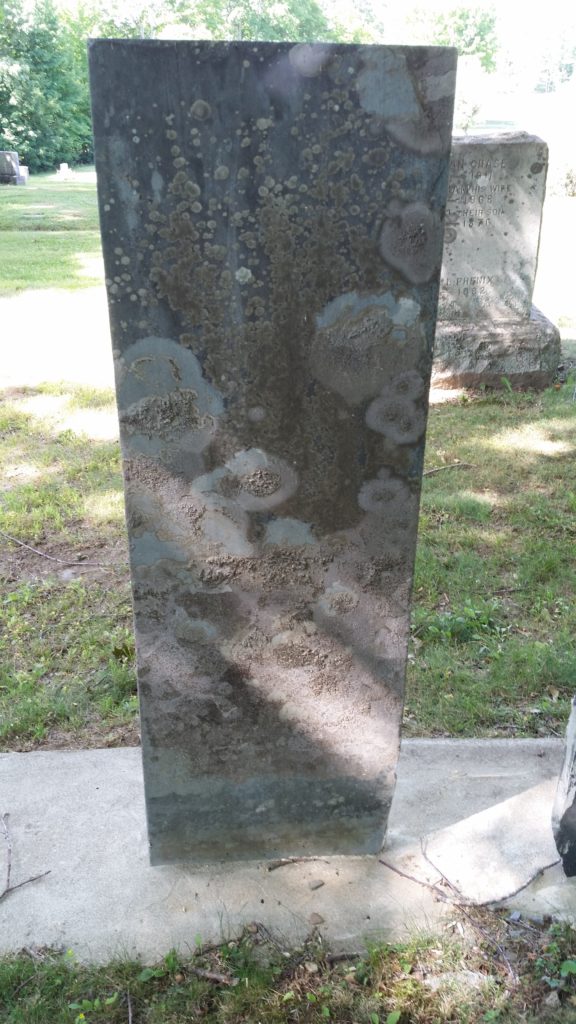
SPECIAL CONSIDERATIONS
REMOVAL OF Found GROWTH
- If plants, peculiarly members of the Ivy family are attached to the stone, do not pull them off. Cut the plants at the base and let them die. If yous can, cut the plants about every six inches. This will decrease the amount of time it takes them to die. You may non be able to clean the stone at this time and have to wait until the plant is dead. When the plant has died, wet the stone and gently remove the plant from the surface. Proceed with a basic cleaning.

REMOVAL OF BIOLOGICAL STAINING
- Lichens, moss, mold and other biological growth, especially bird droppings tin can cause severe damage and staining to headstones and markers. We use D/2, a non-toxic biological, that kills and deters biological growth.
- Soak the stone and while it is wet, spray the rock with D/2.
- Await 10-15 minutes and using your brushes scrub the D/2 into the rock, with special emphasis on areas that accept been stained. Rinse thoroughly. You lot may take to use more D/2 to sure areas.
- Fifty-fifty if the stain is non removed after D/two has set up on the stone, been scrubbed in and rinsed, have organized religion information technology will continue to work for weeks, working its way into the pores killing biological growth that may have grown inside the stone. Don't be surprised if sure areas of the stone modify color. That is the D/2 working, this is normal and the rock will return to its usual color in a few days.
For farther instruction yous can view the following videos on proper cleaning:
RECOMMENDED EQUIPMENT AND MATERIALS
Safety glasses and protective gloves.
Knee pads and boots. Onetime markers may have cleaved drinking glass around the base of operations.
Natural or plastic soft bristle brushes of various shapes and sizes & plastic grout brushes.
Wooden scrapers, craft sticks, tongue depressors, and wooden skewers,
Plastic scrapers, various sizes.
Buckets for holding your supplies and water.
Quart size plastic spray bottles.
i to 2 gallon garden type pump sprayer filled with clean h2o.
A Small tin can of compressed air or mini foliage blower.
Rags and onetime towels.
Gallons and gallons of h2o. One-time make clean plastic milk bottles work corking for transporting water to the markers.
D/2 biological solution. Information technology works all-time at 45 degrees and above. Utilize undiluted for best results. (Our group recommends D/2 equally the starting time choice in cleaning headstones and markers)
Orvus non-ionic cleaner can be used to remove heavy environmental deposits, grime and bird droppings, if h2o alone doesn't remove the grime.
Enviro Klean, Biowash, Modec MDF-500 and Revive are also approved biological cleaners.
October 7, 2022 – CEMETERY CONSERVATORS FOR UNITED STANDARDS
These are the other canonical safe biological cleaners mentioned in a higher place. We hope to be able to add more than information on them equally time goes by.
The reason D/ii biological seems to be in the spotlight more than than these other biocides is elementary. It has the most extensive testing, it is the most well-known of these cleaners, it is the most widely used, and it is the most readily available.
Further Do No Harm Cleaning Methods…The Most Basic
By CCUS members Mark Morton and Larry Betts
When information technology comes to practise no harm cleaning methods, less is more. The to the lowest degree invasive and gentlest methods are always best. The goal is to clean the stone for either a repair purpose, or to make it legible for documentation. Cleaning should never exist about making everything looking brand new. Cleaning should have a purpose and not completely detract from the character of the cemetery.
Some very simple cleaning procedures can be achieved with simply a dry nylon castor or nylon brush with h2o. This of grade is afterward y'all take determined all the personal and rock safe issues that are addressed above, and have adamant what information technology is y'all are trying to clean of the item grave marker. This will chiefly depend on the condition of the engraving and the stubbornness of what is obscuring it.

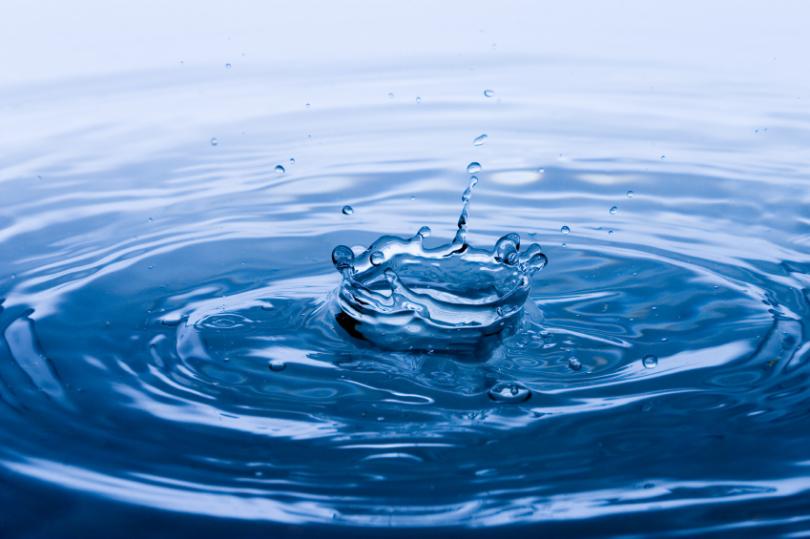
Mud, dirt, and other dry out or easily removable substances may exist removed past gently using a dry nylon brush. Or add some water so yous can clean the stone better and exist able to rinse away the loosened droppings.
Orvus…A Gentle All-Around Cleaner
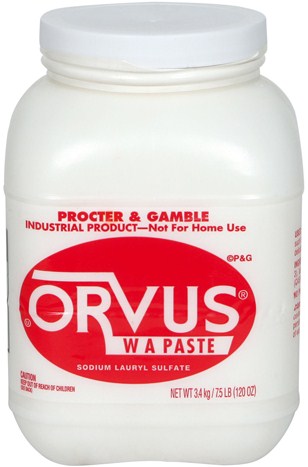
Orvus is a sodium lauryl sulfate. It is completely biodegradable, non-ionic, and does not contain phosphates. Sodium lauryl sulfate is a "surfactant" – it removes stains and residues that are oily, so it'south found equally an ingredient in lots of surface cleaners. It is versatile stuff and is used to clean vintage textiles, linens, needlework, and quilts. All things very decumbent to delicate dies and fibers that must be treated very gently. Orvus paste is very concentrated so it does not accept much to clean with.
In that location are several ways to use Orvus Paste, and y'all tin't really go wrong with any of them. They are just a thing of preference.
Below is a simple step by stride instruction on using Orvus, water, and a nylon brush.
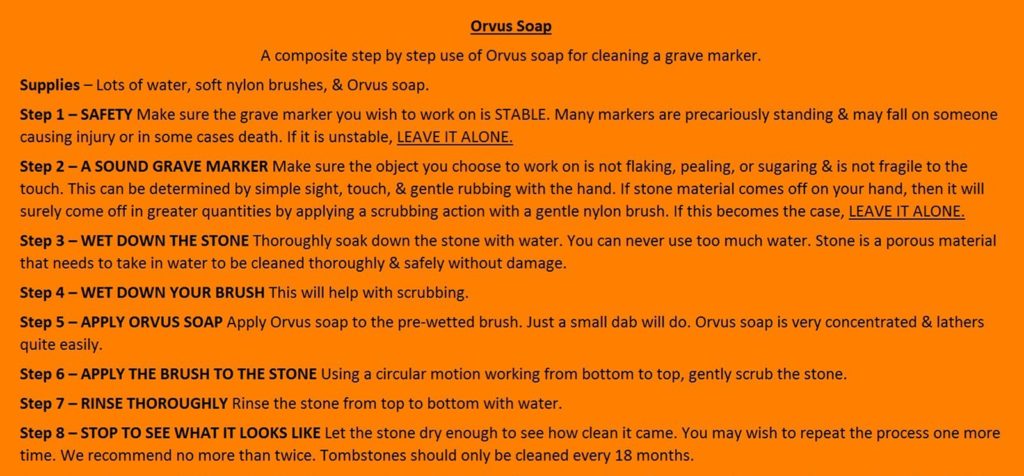
The Bucket And Water Method
Another way that many prefer and find very easy is with a bucket of water and a little Orvus Past. Make full whatsoever given bucket up near 2/3'south with water and add a couple tsps. of Orvus into the h2o. Mix around in the water with your hand until it dissolves, and now you accept a bucket of soapy like water. Use with nylon brush until water is dirty, and mix a new saucepan. This method as well helps yous go along you lot brush much cleaner than the other methods because y'all can hands rinse your brush out in the bucket.

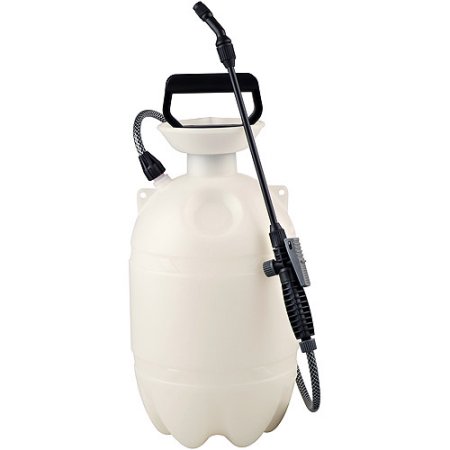
With any of these methods you will need a nylon brush and a generous corporeality of h2o for both scrubbing and rinsing. A 2 to 5 gallon pump sprayer works well for rinsing. Y'all can usually find them for betwixt $ten and $20 at virtually whatsoever DIY type store. Finding or brining your ain water supply will be hardest affair to figure out.
The Spray-Canteen Method
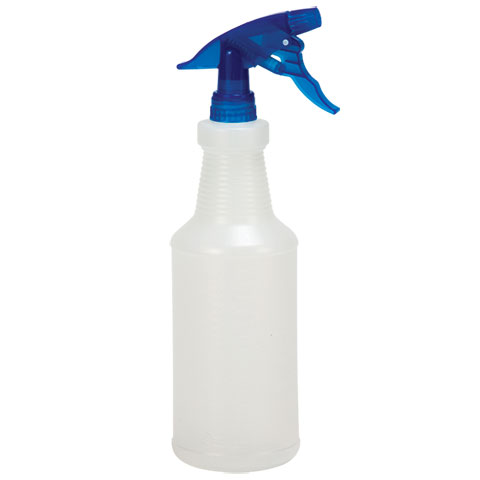
Rather than apply Orvus directly on a brush or use it out of a bucket, some prefer to premix Orvus and water and bring information technology with them gallon jugs. Mix the Orvus and water like to a higher place in the saucepan method, but cascade it into transportable containers to refill your hand sprayer with.
D/ii Biological Solution
A prophylactic well tested cleaner to kill biological growth
At that place are a diverseness of ways to use D/2. Here are two methods that come straight from the manufacturer.
The Immediate Result Method
Apply D/2 Biological Solution with a castor, roller, hand pump sprayer (garden style pump sprayer) or depression pressure power sprayer.
- Allow undiluted D/2 to remain on the surface 10-15 minutes.
- Apply additional D/2 equally necessary to maintain a wet surface.
- Scrub with soft nylon or natural bristle brush. Practice Not USE Metal Brush.
- Lightly mist with water and continue scrubbing.
- Rinse thoroughly with clean, potable h2o.
- Reapply if rain occurs within 12 hours of application.
The No Scrub/No Rinse Method
- Using a sprayer (pump-up, low force per unit area, or other,) moisture the entire surface with D/2.
- Allow to air dry.
D/two works with the elements and results occur inside i week to one calendar month, depending on severity of soil. Reapply if pelting occurs within 12 hours of application.
A Variety Of Methods Plant By Others
Conservators in the field too as others, have found additional D/ii cleaning methods based on those recommended past the manufacturer. You may find many of these methods could save you time and money. The following 3 methods are virtually preferred by conservators and those who have scrubbed a number of markers before.
Method 1
- Dry castor and scrape the biological growth off first
- Wet down the marking with h2o and scrub it thoroughly with water
- Rinse off the marker thoroughly with water washing away the biological debris
- Thoroughly mist coat the stone with D/2 and walk abroad
Method 2
- Wet down the mark thoroughly and brush and scrape the biological growth off
- Wet downward the marker with water and scrub it thoroughly with h2o
- Rinse off the mark thoroughly with h2o washing abroad the biological droppings
- Thoroughly mist glaze the stone with D/ii and walk abroad
Method iii
- Dry castor and scrape the biological growth off or Moisture down the marker thoroughly and brush and scrape the biological growth off
- Wet downwardly the marker with water and scrub it thoroughly with Orvus Paste
- Rinse off the marker thoroughly with water washing away the biological debris
- Thoroughly mist coat the stone with D/2 and walk away
Whichever method yous choose, or combination of methods, you lot cannot go wrong because D/2 is a proven safe product that involves no mixing. There is naught you could make too stiff or get wrong.
From the Manufacturer…A Further Handling and Maintenance Program
Add years to the life of your property. Afterward initial treatment of substrate, a once-a-year light spraying will help maintain a clean, stain-free surface. NOTE: Heavy biological deposits can be loosened using a depression pressure washer (600 psi), and may require echo applications of D/2 to achieve complete cleaning afterwards detachment. Alternatively, heavy growth can be discrete by manual scraping using wooden or plastic tools immediately after application. In the result of excessive plant exposure, rinse all plants and h2o-in all planted ground areas contacted past D/2.
More to exist added in the about future pertaining to other cleaning issues such as tree sap, bird droppings, industrial pollution, and paint due to vandalism.
December 23, 2022 – CEMETERY CONSERVATORS FOR UNITED STANDARDS
Source: https://cemeteryconservatorsunitedstandards.org/standards/cleaning/
Posted by: sanchesaborecturs1970.blogspot.com

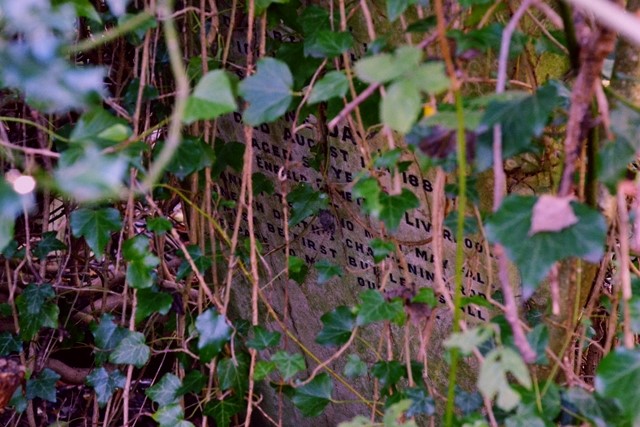

0 Response to "How To Clean Old Water On Bucket"
Post a Comment